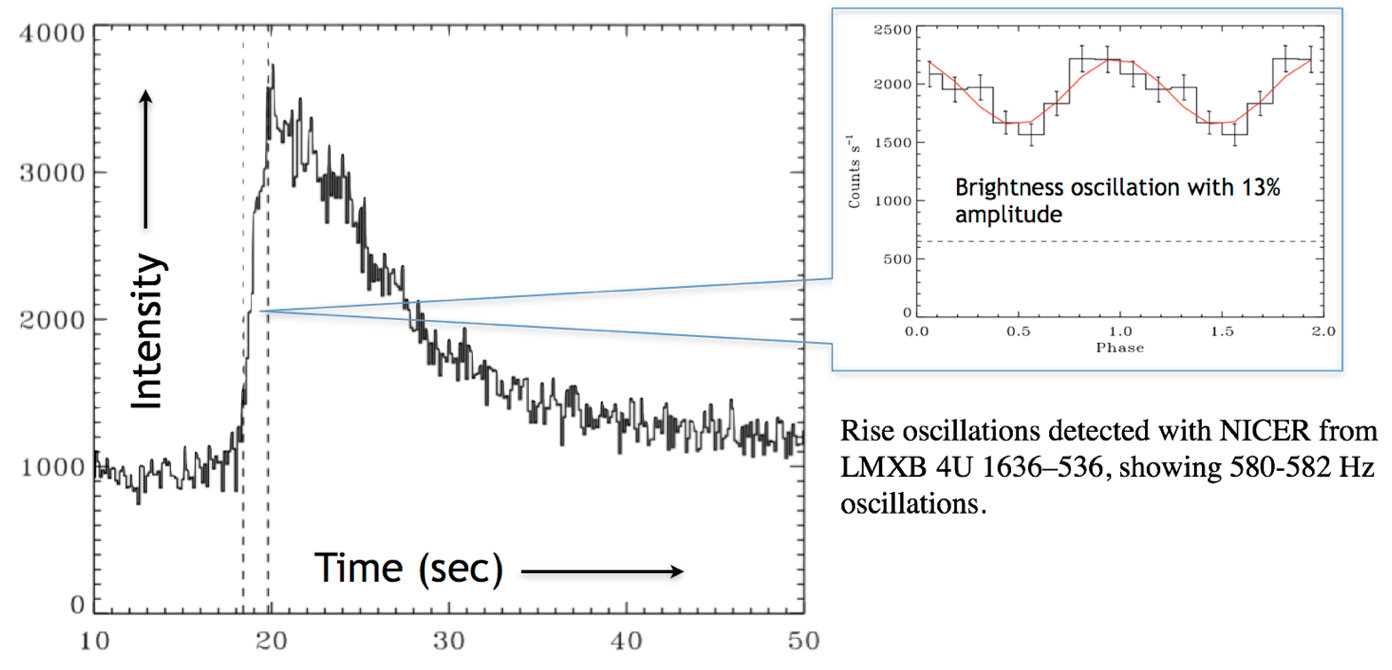NICER / ISS Science Nugget for March 16, 2018Oscillations detected in the rise phase of a Type I X-ray burstType I X-ray bursts, observed as X-ray flashes from neutron stars in low-mass X-ray binaries (LMXBs), are thermonuclear explosions caused by the unstable burning of material accreted onto a neutron star surface from a companion star. During a burst, the X-ray flux can rise by factors of 10 to 20 in a few seconds and then decay on longer timescales, tens to hundreds of seconds. Periodic brightness fluctuations have been detected, with high time-resolution instruments such as NICER, during the rise and/or decay of approximately 10% of Type I X-ray bursts, with oscillation frequencies representative of the neutron star spin rate. The oscillations during the rise can be explained by temperature asymmetries due to the spreading burning region on the surface of the neutron star. But the oscillation mechanism during the decaying phase of bursts is still unknown. NICER has already observed many X-ray bursts (see figure for an example) and several burst oscillations from LMXBs and continues to do so, enabling us to better understand how these phenomena arise, and to probe the structure and properties of the underlying neutron stars. NICER
|



